| Unique
features of thrips |
| In
addition to their remarkably asymmetric mouthparts, in which the right
mandible is not developed beyond a small basal sclerite in larvae or
adults, thrips also exhibit several other unique features. The ordinal
name “Thysanoptera” is derived from Greek words meaning “fringed
wings”, and refers to the curious narrow wings of adult thrips.
However, slender wings with long marginal fringing cilia occur on many
other small insects, and adults of many thrips species are wingless. |
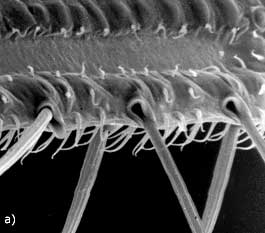 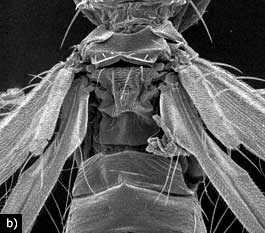 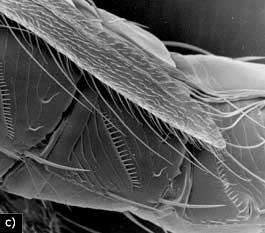 |
Frankliniella
occidentalis - wing structures: a) bristles with special sockets
that retain them in different positions at rest and in flight; b) pterothorax
with base of fore and hind wing; c) abdomen with wing retaining setae
and ctenidia (photos: G. Moritz)
|
In
German the common name, “Blassenfüße”, refers
to the feet of thrips that lack typical insectan tarsal claws but bear
an eversible adhesive bladder or arolium. The English common name, “thrips”,
is derived from a Greek word meaning “wood worm”, and refers
to the fact that many non-pest thrips species are associated with fungi
on dead wood.
The life history of thrips species is also unique amongst insects. After the
egg hatches, there are two larval stages, and both of these larvae move around
and feed actively. However, these are followed by two separate, non-feeding,
pupal stages (three pupal stages occur in all Phlaeothripidae), in contrast to
the single pupal stage of most insect species. The eggs of thrips are commonly
inserted into plant tissues, one at a time, using the saw-like ovipositor of
females, but in all Phlaeothripidae the eggs are deposited on the surface of
their food, whether plants or fungi. |
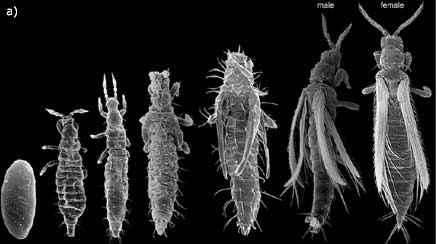  |
| Frankliniella
occidentalis - a) ontogenesis: egg stage, two larval stages, two
separate, non-feeding, pupal stages, adult stage, b) tip of tarsus with
arolium (foot bladder): left extruded and right retracted (photos: G.
Moritz). |
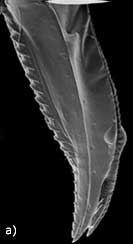  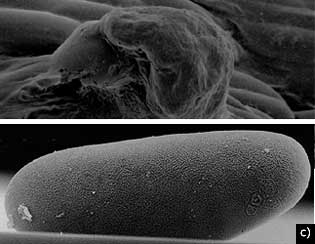 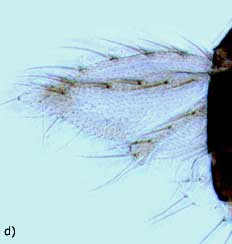
|
| Frankliniella
occidentalis - a) valvulae of the ovipositor with rows of sensillae
to detect the depth of penetration during oviposition, b) section of
a leaf of Saintpaulia with an empty egg shell shortly after
hatching, c) leaf surface with a glued egg chamber, beneath: typical
egg of an tubuliferan species with micropyles and hexagonal sculptered
shell, d) Frankliniella fusca: brachypterous fore and hind
wing (photos: G. Moritz). |
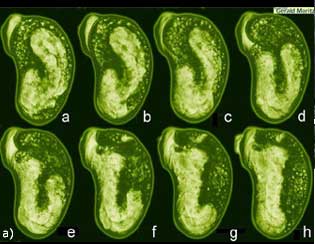 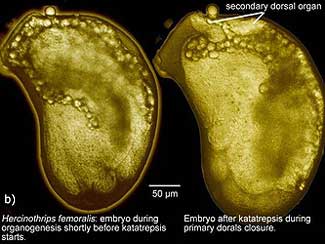   |
| Frankliniella
occidentalis - a) successive steps of katatrepsis, b) Hercinothrips
femoralis - embryo shortly before katatrepsis and during primary dorsal
closure, c) Aptinothrips rufus: apterous female with typical fused
pterothoracic region, d) Frankliniella fusca: brachypterous female
with reduced fore and hind wing (photos: G. Moritz). |













